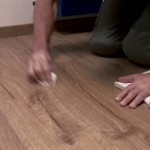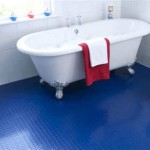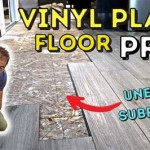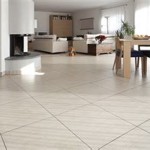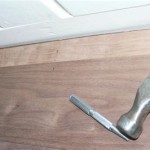What Type of Flooring is Best for Dogs
Selecting the appropriate flooring for a home with canine companions presents a unique set of considerations. The ideal floor must balance durability, ease of maintenance, comfort for the dog, and aesthetic appeal for the homeowner. Navigating the diverse landscape of flooring options requires a thorough understanding of each material's strengths and weaknesses in relation to a dog's specific needs.
Pet owners must consider factors such as scratch resistance, stain resistance, water resistance, slip resistance, and ease of cleaning when evaluating flooring. A dog's breed, size, age, and activity level will also influence the optimal flooring choice. For example, a large, active breed with long nails will place greater demands on a floor's scratch resistance than a small, sedentary breed.
This article will explore various flooring options, detailing their suitability for households with dogs, and providing insight into the key attributes that contribute to a dog-friendly environment.
Durability and Scratch Resistance
One of the most critical factors in selecting flooring for a dog-friendly home is its durability and resistance to scratching. Dogs, especially those with long or untrimmed nails, can inflict significant damage on certain flooring types. Choosing a material that can withstand daily wear and tear from canine paws is essential for long-term satisfaction.
Hardwood flooring, while aesthetically pleasing, is often susceptible to scratches from dog nails. Softer wood species, such as pine, are particularly vulnerable. Engineered hardwood, which consists of a thin layer of hardwood veneer over a more stable core, offers slightly improved scratch resistance compared to solid hardwood. However, even engineered hardwood can sustain damage over time with active dogs.
Laminate flooring, constructed from composite wood pressed together at high temperatures, provides a more durable and scratch-resistant alternative to hardwood. The wear layer, the top surface of the laminate, is rated using an Abrasion Class (AC) rating. A higher AC rating indicates greater resistance to wear and tear. For homes with dogs, an AC rating of 3 or higher is generally recommended.
Luxury Vinyl Tile (LVT) and Luxury Vinyl Plank (LVP) flooring are also excellent choices for dog owners. These materials are highly resistant to scratches, dents, and stains. LVT and LVP are typically constructed with a wear layer that protects the underlying material from damage. The thickness of the wear layer is a primary indicator of its durability. A thicker wear layer offers greater protection. Most LVT and LVP flooring marketed as pet-friendly has a wear layer that's at least 20 mil thick.
Tile flooring, particularly porcelain and ceramic tile, is renowned for its durability and scratch resistance. Tile is extremely hard and impervious to most scratches, making it an ideal choice for high-traffic areas and homes with large, active dogs. However, grout lines between tiles can be susceptible to staining and require regular maintenance.
Concrete flooring, when properly sealed and finished, can also be a durable and scratch-resistant option. While concrete itself is incredibly hard, sealing is crucial to prevent staining and moisture absorption. Polished concrete offers a sleek and modern aesthetic while providing a robust surface that can withstand heavy use.
Water and Stain Resistance
In addition to scratch resistance, water and stain resistance are essential considerations for dog owners. Accidents happen, and even well-trained dogs can occasionally track in mud, dirt, or other liquids. Flooring that is easily cleaned and resistant to staining will simplify maintenance and preserve the floor's appearance.
Hardwood flooring is particularly vulnerable to water damage. Moisture can cause hardwood to warp, swell, and stain. While some hardwood flooring is pre-finished with water-resistant coatings, these coatings are not entirely foolproof. Spills should be cleaned up promptly to prevent permanent damage.
Laminate flooring offers better water resistance than hardwood, but it is still not completely waterproof. Standing water can seep into the seams between planks and cause the underlying wood composite core to swell. Choosing a laminate flooring product with a waterproof core or installing it with a waterproof underlayment will enhance its water resistance.
LVT and LVP flooring are inherently waterproof, making them a superior choice for areas prone to spills or moisture. The waterproof construction prevents water from penetrating the flooring, eliminating the risk of warping, swelling, or mold growth. This makes LVT and LVP ideal for bathrooms, kitchens, and mudrooms.
Tile flooring is also highly water-resistant, making it a practical choice for dog owners. Porcelain and ceramic tile are non-porous, preventing water from seeping into the material. Grout lines, however, can be porous and susceptible to staining. Sealing the grout lines will help to prevent staining and mold growth.
Concrete flooring, when properly sealed, can be highly water-resistant. The sealant creates a barrier that prevents water from penetrating the concrete. Spills should still be cleaned up promptly to prevent staining, especially from acidic substances.
Comfort and Safety for Dogs
While durability and ease of maintenance are important, the comfort and safety of the dog should also be considered when selecting flooring. A floor that is too hard or slippery can be uncomfortable or even dangerous for dogs, especially older dogs or those with joint problems.
Hardwood flooring can be relatively comfortable for dogs to walk on, although it can be slippery, especially when polished. Adding rugs or carpets can provide traction and cushioning for dogs.
Laminate flooring can also be slippery, particularly when new. The smooth surface can make it difficult for dogs to get a good grip, increasing the risk of slips and falls. Textured laminate flooring can improve traction.
LVT and LVP flooring offer a good balance of comfort and slip resistance. Many LVT and LVP products have a textured surface that provides better traction for dogs. The slightly softer material also offers more cushioning than tile or concrete.
Tile flooring, while durable, can be cold and hard underfoot. This can be uncomfortable for dogs, especially in colder climates. Adding rugs or heated flooring can improve comfort.
Concrete flooring is also hard and cold, making it less comfortable for dogs. Polishing concrete can also make it slippery. Adding rugs or radiant heating can improve comfort and safety.
In addition to the flooring material itself, the underlayment can also impact comfort. A thicker and more cushioned underlayment will provide more support and reduce the impact on a dog's joints. This is particularly important for older dogs or those with arthritis.
Texturing is another key factor. Smooth, polished surfaces can be treacherous for dogs, particularly those prone to excitement or older animals with reduced mobility. Flooring with a textured surface provides better grip, reducing the likelihood of slips and falls. This consideration is crucial for ensuring a safe and comfortable environment for canine companions.
Beyond the specific material, consider the overall impact on a dog's joints. The constant pressure of walking on hard surfaces can exacerbate existing joint problems or contribute to the development of new ones. Incorporating softer surfaces, such as area rugs or dog beds, throughout the home offers relief and distributes weight more evenly.

How To Choose The Best Flooring For Dogs Home Depot

How To Choose The Best Flooring For Dogs Home Depot

How To Choose The Best Flooring For Dogs Home Depot

How To Choose The Best Flooring For Dogs Home Depot

Pet Friendly Flooring Guide
.png?strip=all)
What S The Best Dog Friendly Flooring America

What S The Best Flooring For Dogs Inc

How To Choose The Best Flooring For Dogs Home Depot

What S The Best Flooring For Dogs Inc

Pros And Cons Of Flooring Types For Dogs Floors Paws
Related Posts

